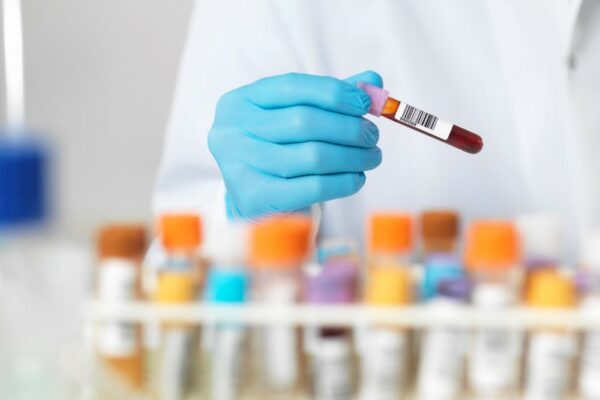
Epcoritamab plus R-ICE achieved high response rates in relapsed/refractory (R/R) diffuse large B-cell lymphoma (DLBCL), with overall response rate of 87% and complete responses in 65% of patients. Most patients proceeded to ASCT, and responses were durable, with all patients alive at six months in the phase I/II EPCORE NHL-2 trial.
Approximately 50% of patients with R/R DLBCL are refractory to standard salvage chemoimmunotherapy (CIT), such as rituximab, ifosfamide, carboplatin, and etoposide (R-ICE), limiting their ability to undergo autologous stem cell transplant (ASCT) and resulting in poor outcomes.1 Epcoritamab, a subcutaneous CD3xCD20 bispecific antibody, has shown promising complete response (CR) rates (69%) and high ASCT rates (55%) in combination with other CIT regimens (R-DHAX/C).2 At EHA 2025, the first efficacy and safety results of the phase I/II EPCORE NHL-2 were presented, evaluating epcoritamab combined with R-ICE in patients with R/R DLBCL.3
Study design
The phase I/II EPCORE NHL-2 trial enrolled patients with R/R DLBCL eligible for R-ICE and ASCT who had received >1 prior line of therapy. Patients received epcoritamab with R-ICE in cycles 1-3, followed by epcoritamab alone from cycle 4 onward. Cycles 1-4 lasted 21 days, and cycles 5 and beyond lasted 28 days. Epcoritamab was administered once weekly in cycles 1-4 and once every two weeks thereafter. Treatment continued until ASCT, disease progression, or unacceptable toxicity. The primary endpoint was investigator-assessed overall response rate (ORR). Key secondary endpoints included CR rate, duration of response (DOR), duration of complete response (DOCR), progression-free survival (PFS), overall survival (OS), minimal residual disease (MRD)-negativity rate, and safety.
Results
With a median follow-up of 11 months, 31 patients with R/R DLBCL received epcoritamab plus R-ICE. Median age of the patients was 62 years, 55% were male, and most had advanced-stage (61%) or bulky disease (42%). The majority (81%) had received only one prior line of therapy, and 65% had relapsed within 12 months of first-line treatment.
Most patients (65%) completed treatment and proceeded to ASCT. The ORR was 87%, with 65% achieving a CR and 23% a partial response (PR), with strong responses across key subgroups, including patients with disease progression <12 months of first-line therapy. Prior to ASCT, 14 patients were in CR and 6 in PR, with 5 patients converting to CR post-ASCT. At 6 months, 81% of CRs were ongoing, 74% of patients remained progression-free, and all patients were alive.
The most common treatment-emergent adverse events (TEAEs) were neutropenia (87%), thrombocytopenia (87%), and anaemia (68%). Cytokine release syndrome (CRS) occurred in 52% of patients, all grade 1 or 2, and resolved. No tumour lysis syndrome was observed. Infections occurred in 58% of patients, with 16% experiencing serious infections. No patients discontinued epcoritamab due to adverse events.
Conclusion
Epcoritamab plus R-ICE showed high CR rates in patients with R/R DLBCL eligible for ASCT, many of whom had high-risk disease. The regimen had a manageable safety profile with no treatment discontinuations due to adverse events. These findings support the potential of epcoritamab combined with CIT to improve salvage therapy outcomes and increase ASCT eligibility, offering more patients a curative opportunity.
References
1. Crump M, Neelapu SS, Farooq U, et al. Outcomes in refractory diffuse large B-cell lymphoma: results from the international SCHOLAR-1 study. Blood. 2017;130(16):1800-08.
2. Karimi Y, Abrisqueta P, de Vos S, et al. Epcoritamab + R-DHAX/C in transplant-eligible patients (pts) with high-risk relapsed or refractory (R/R) diffuse large B-cell lymphoma (DLBCL). Presented at ASCO 2024; Abstract 7032.
3. Cordoba R, Trneny M, De Vos S, et al. First disclosure of epcoritamab + R-ICE in patients with relapsed/refractory diffuse large B-cell lymphoma (R/R DLBCL) eligible for autologous stem cell transplantation (ASCT): EPCORE NHL-2. Presented at EHA 2025; Abstract S245.